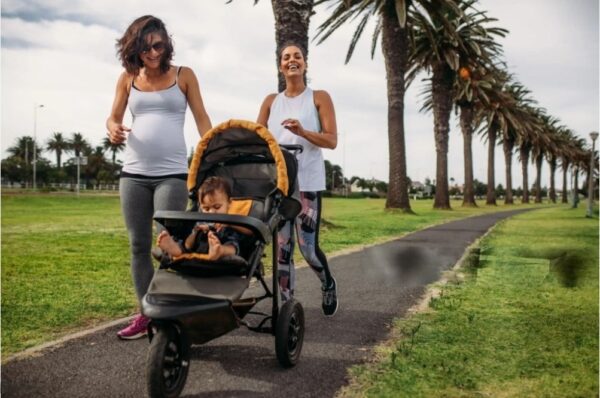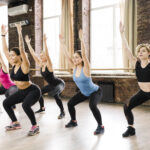How to run for women, the running journey has been one of breaking barriers, redefining limits, and embracing the body’s natural rhythm. Whether you’re a beginner lacing up for your first 5K or a seasoned marathoner chasing a new PR, running as a woman comes with unique opportunities and challenges.

This guide dives into how to run for women the right way—from understanding your physiology and training through your cycle, to choosing the right gear, staying active during pregnancy, and preventing common injuries. You’ll also learn how women around the world have transformed the sport with record-breaking performances and unwavering resilience.
No matter where you are in your running journey, you deserve to train smarter, feel stronger, and run with purpose. Let’s explore what it truly means to run—the excellent way.
How to Run as a Woman: A Comprehensive Guide to Safe, Effective, and Empowered Training
Running is one of the most empowering forms of exercise for women. Despite historical gender biases in sports, women now make up over half of all race participants worldwide. From menstrual cycle considerations to pregnancy and injury prevention, understanding how to run for women effectively means honoring both physiology and performance.
This guide, rooted in the latest research and practical advice, provides a science-backed look at the best strategies for female runners—whether you’re a beginner or an experienced athlete.
Women in Running: A Rapid Evolution
The story of women in running is a powerful tale of perseverance, progress, and performance. For much of modern history, women were not just underrepresented in endurance sports—they were systematically excluded. Until the 1980s, female athletes were often told that long-distance running was dangerous to their health and femininity. It wasn’t until 1984 that the women’s marathon became part of the Olympic Games, with American Joan Benoit Samuelson seizing gold and smashing stereotypes on the global stage.
🚫 From Restriction to Revolution
Before that watershed moment, women were barred from running official marathons. The Boston Marathon, one of the world’s oldest races, didn’t officially allow women to register until 1972—even though Kathrine Switzer famously ran it unofficially in 1967, defying attempts to remove her mid-race. Her rebellious stride became symbolic of a broader movement: not just toward inclusion but toward excellence.
Fast forward to 2018, and the landscape had completely shifted. According to The State of Running 2019 report, 50.24% of all global race finishers were women. Iceland led with 59% female participation, followed by the United States (58%) and Canada (57%)—proving that what was once a male-dominated sport had become a female-driven phenomenon.

The Evolution of Women Running
But this evolution hasn’t been limited to access or numbers—it has transformed everything from gear to goals.
👗 Gear: Built for Women, Finally
In the early days, women runners wore poorly fitting shoes designed for men, and sports bras didn’t even exist until 1977. Fast forward to today, and women have access to biomechanically engineered shoes, supportive performance wear, and sports bras designed for different stages of life, including pregnancy and postpartum running. Leading brands now prioritize women’s needs in their R&D departments, thanks to both advocacy and demand.
🧠 Training: Personalized and Data-Driven
Where once a “one-size-fits-all” training philosophy prevailed, today’s female runners benefit from science-based, cycle-aware training plans. Research led by scientists like Dr. Stacy Sims and Georgie Bruinvels has changed how women approach endurance sports—emphasizing the importance of training in sync with hormonal changes for optimal performance and recovery.
Coaches now adapt plans for menstrual cycle phases, perimenopause, and postpartum return-to-run protocols, making training safer and more effective for women at every stage of life.
🌟 Trailblazers and Record-Breakers
From Paula Radcliffe’s unthinkable 2:15:25 marathon record in 2003 to Brigid Kosgei’s 2:14:04 in 2019, women continue to push the boundaries of human performance. Eliud Kipchoge’s famous sub-2-hour marathon often overshadows female efforts, but the margin of improvement in women’s racing has been arguably more dramatic and transformative.
And it’s not just about elites. Community running groups, virtual races, and social media have empowered millions of women globally to lace up, show up, and redefine what it means to be a runner.
Physiology & Performance: Key Differences for Female Runners

While men and women generally follow similar training principles, there are key physiological differences to consider:
- Muscle Mass vs. Fat Composition: Women typically carry more body fat and less muscle mass compared to men of the same weight. This affects speed and endurance at all distances.
- Hormonal Cycles: Female hormones like estrogen and progesterone influence performance, recovery, and injury risk throughout the menstrual cycle.
- Iron Levels: Women, especially endurance athletes, are more prone to iron deficiency, which can impact stamina, oxygen transport, and recovery.
➡️ Pro Tip: Consider periodic blood tests to check ferritin and iron levels, especially if you’re feeling unusually fatigued.
Running and the Menstrual Cycle: What Every Woman Should Know
🔬 Research Insight: Georgie Bruinvels, Ph.D. Candidate and Endurance Athlete
Georgie Bruinvels has led groundbreaking research on the menstrual cycle’s impact on athletic performance. Her studies reveal:
- Over 50% of female athletes report performance fluctuations tied to their cycle.
- Low iron levels are especially common during menstruation and can hinder performance.
✅ Actionable Tips:
- Track your cycle with apps like FitrWoman or Clue to align training phases.
- Focus on iron-rich foods (e.g., spinach, lentils, red meat) or supplements when necessary.
- Recognize that certain phases—like the follicular phase (after menstruation)—often come with increased strength and energy.
Good News: Exercise across all cycle phases is safe and can even help reduce menstrual pain and improve mood.
Hormonal Balance and High-Intensity Training
Intensive running may disrupt hormonal balance in some women. Side effects include:
- Delayed Menarche (first period) in adolescent runners
- Irregular or absent periods (amenorrhea) in competitive athletes
- Lower estrogen and progesterone levels, which can reduce bone density and increase injury risk
🔍 Fun Fact: Some elite athletes perceive missing periods as “convenient,” but it can signal underlying health issues like Relative Energy Deficiency in Sport (RED-S).
🔑 Solution:
- Incorporate rest days, strength training, and adequate nutrition to prevent hormonal imbalances.
- Consult a sports nutritionist or gynecologist if experiencing irregular cycles for more than three months.
Running During Pregnancy: Safety First

🤰Yes, you can run during pregnancy—if you were already a runner before becoming pregnant. However, it’s essential to adjust your routine:
🛑 What to Watch Out For:
- Stop immediately if you feel dizzy, have cramps, experience shortness of breath, or discomfort.
- Avoid running in hot or humid weather. Overheating can pose risks to fetal development (especially if core temperature exceeds 38.3°C / 101°F).
- Don’t exceed moderate exertion. You should be able to speak in full sentences while running.
🏃♀️ Tips for Pregnant Runners:
- Use supportive gear, including a maternity running belt.
- Switch to low-impact cardio if running feels uncomfortable: elliptical, swimming, walking, or aqua jogging.
- Stay hydrated and listen to your body.
- Avoid sudden stops—cool down gradually to help blood return to the uterus safely.
Postpartum Running: When and How to Return
Most women can resume running 4–6 weeks postpartum, but it’s highly individual. Consult with your doctor first.
🏋️ Focus On:
- Pelvic floor strengthening (Kegels, bridges, Pilates)
- Core rehab, especially if you had abdominal separation (diastasis recti)
- Walking before running to ease back into a rhythm
Baby joggers allow new mothers to stay active while bonding with their child. Look for models with proper suspension and safety harnesses.
Pelvic Pain & Running: Risks and Recovery
Some women experience pelvic joint pain during pregnancy or postpartum, due to relaxed ligaments and insufficient core stability.
🚫 If you experience:
- Hip instability
- Shooting pelvic pain
- Discomfort during movement
➡️ Stop running immediately and consider alternative activities like swimming, stationary biking, or aqua running.
In most cases, pelvic pain resolves post-delivery, especially with proper rehab.
Mental Health & Motivation: Why Women Run
Running offers more than just physical benefits:
- Stress relief through endorphin release
- Improved sleep and mood
- A powerful sense of accomplishment
- Community and connection via running clubs and races
Practical Tips: How to Run for Women Safely and Effectively
Here’s a checklist to get the most out of your training:
|
✅ Tip |
💡 Why It Matters |
|
Track your menstrual cycle |
Optimize performance and recovery |
|
Strength train 2x/week |
Improve speed, endurance, and prevent injuries |
|
Fuel properly |
Avoid hormonal imbalances and RED-S |
|
Hydrate consistently |
Especially during pregnancy or menstruation |
|
Sleep 7–9 hours/night |
Enhances recovery and hormone regulation |
|
Listen to your body |
Stop when discomfort or fatigue strikes |
For many women, running becomes a space of empowerment and personal growth, not just exercise.
Final Thoughts
Whether you’re training for your first 5K or your tenth marathon, understanding how to run for women means respecting your body’s cycles, needs, and power. With the right approach, running can be a lifelong activity that supports both physical and mental health.
If you have any questions or would like to share your experience as a female runner, leave a comment below—your story could inspire someone else to hit the road.
📣 Thanks for reading. If you found this helpful, feel free to share it with a fellow runner—or anyone who needs a reminder that the finish line is never as far as it seems.
Updated and renewed for 2025, this post now reflects the latest insights and training strategies for marathon runners.




This is some really helpful tips and advice that you have written in your article in regards to the proper way for women to run marathons. The truth like you mentioned is that woman have been discriminated against when it comes to sports and its something that can still be slightly seen till today but nevertheless your article was really insightful
Hi Beesean
Thanks for the comment. It’s being better for women today in sports. Like in tennis where men and women are more equal when it comes to payment, as last year’s US Open final – The payment for winning was the same for Rafael Nadal and Bianca Andreescu.
Be Well
I remember that I used to be a runner back in school but I had to stop all that at a point and also had to start learning how to become a full lady. Now that I think that I am adding too much weight, I want to go back to running. One of the real reasons is because of the spins that I feel and a person recommended running to me. I’m happy you could share this info. Thank you!
Hi Suz
Thank you fir your comment. I’m not sure that I understand what “spins” is – sorry. But if you have been recommended running I’m sure there is a solution to it.
Be Well